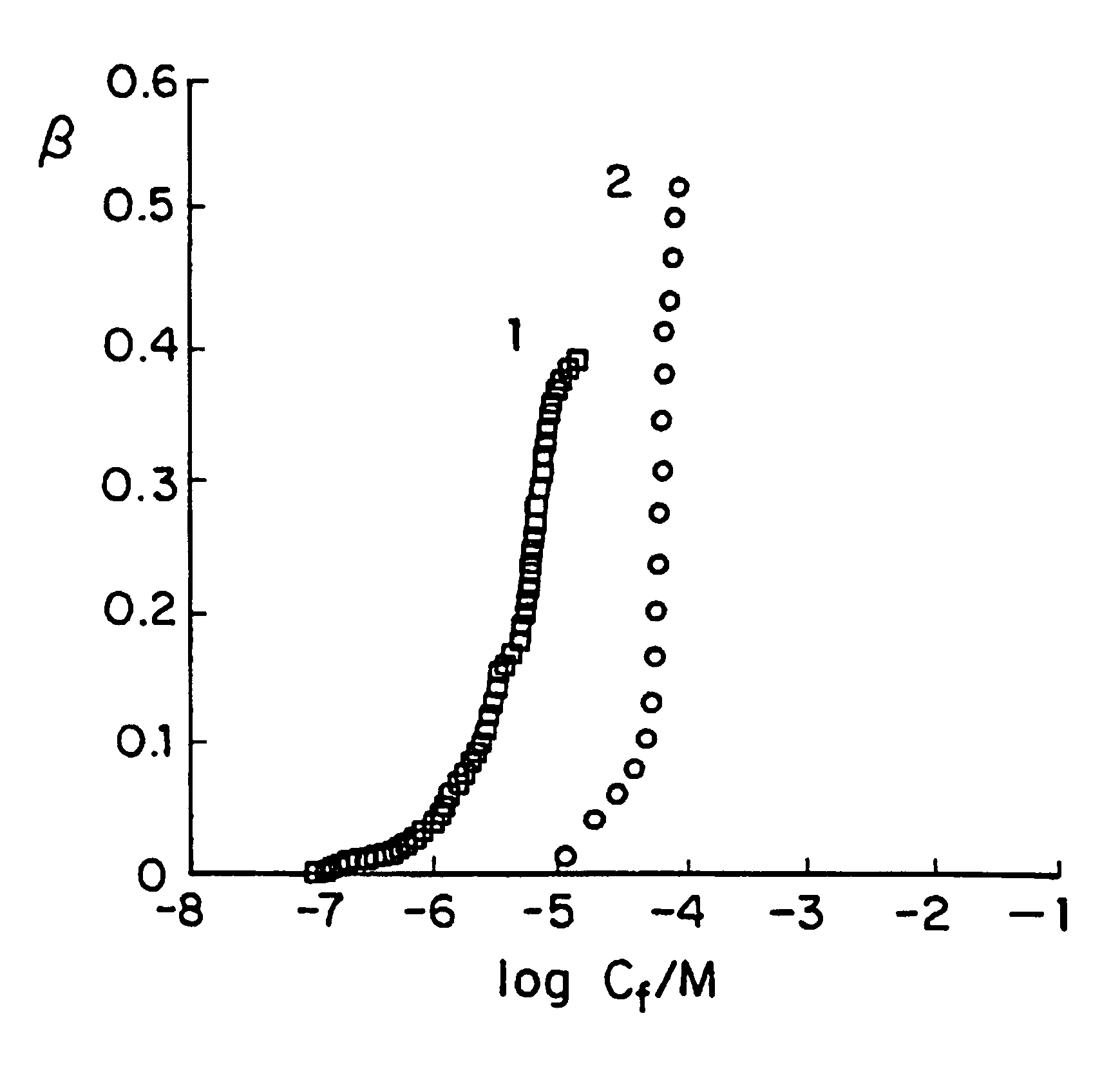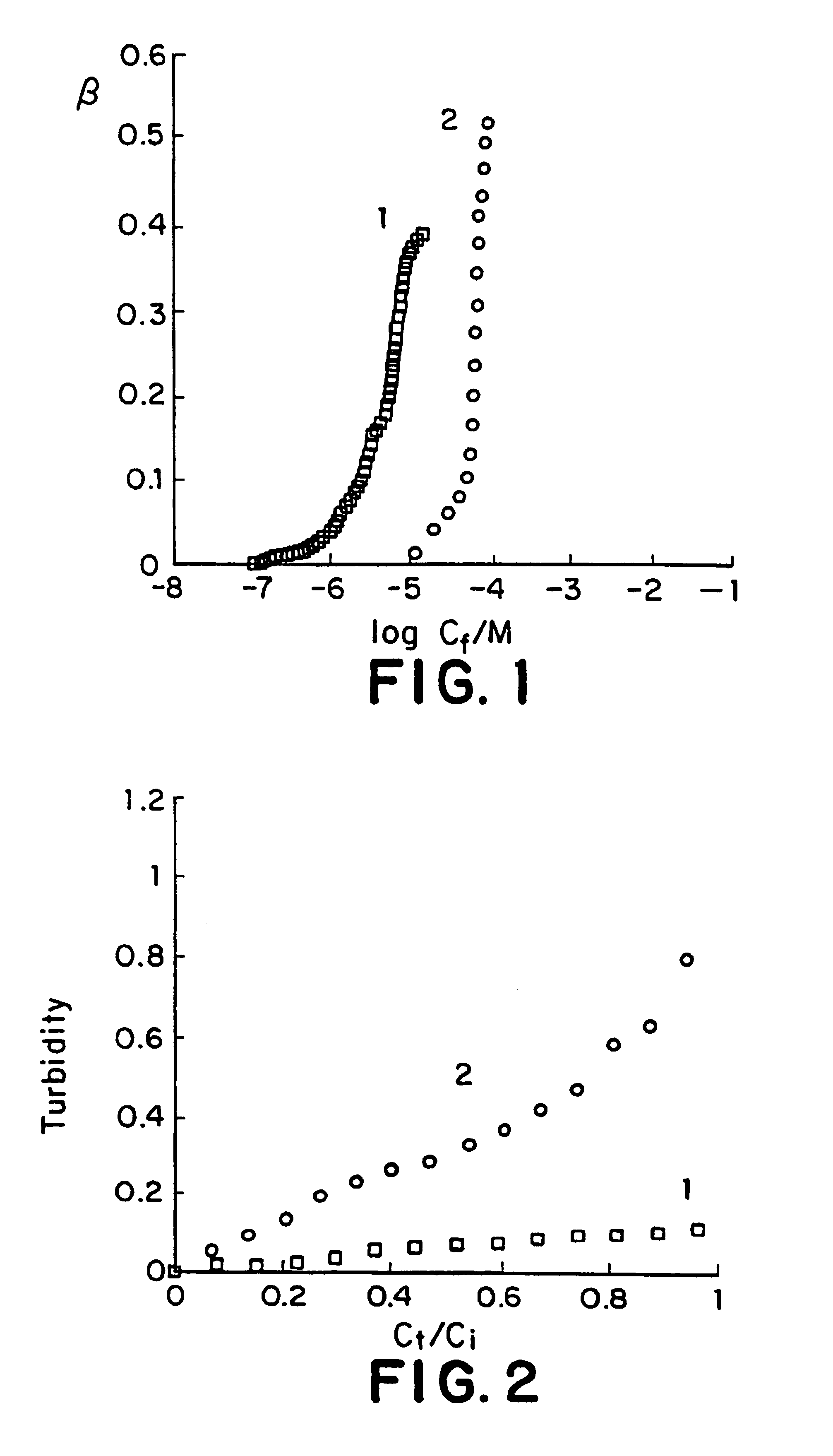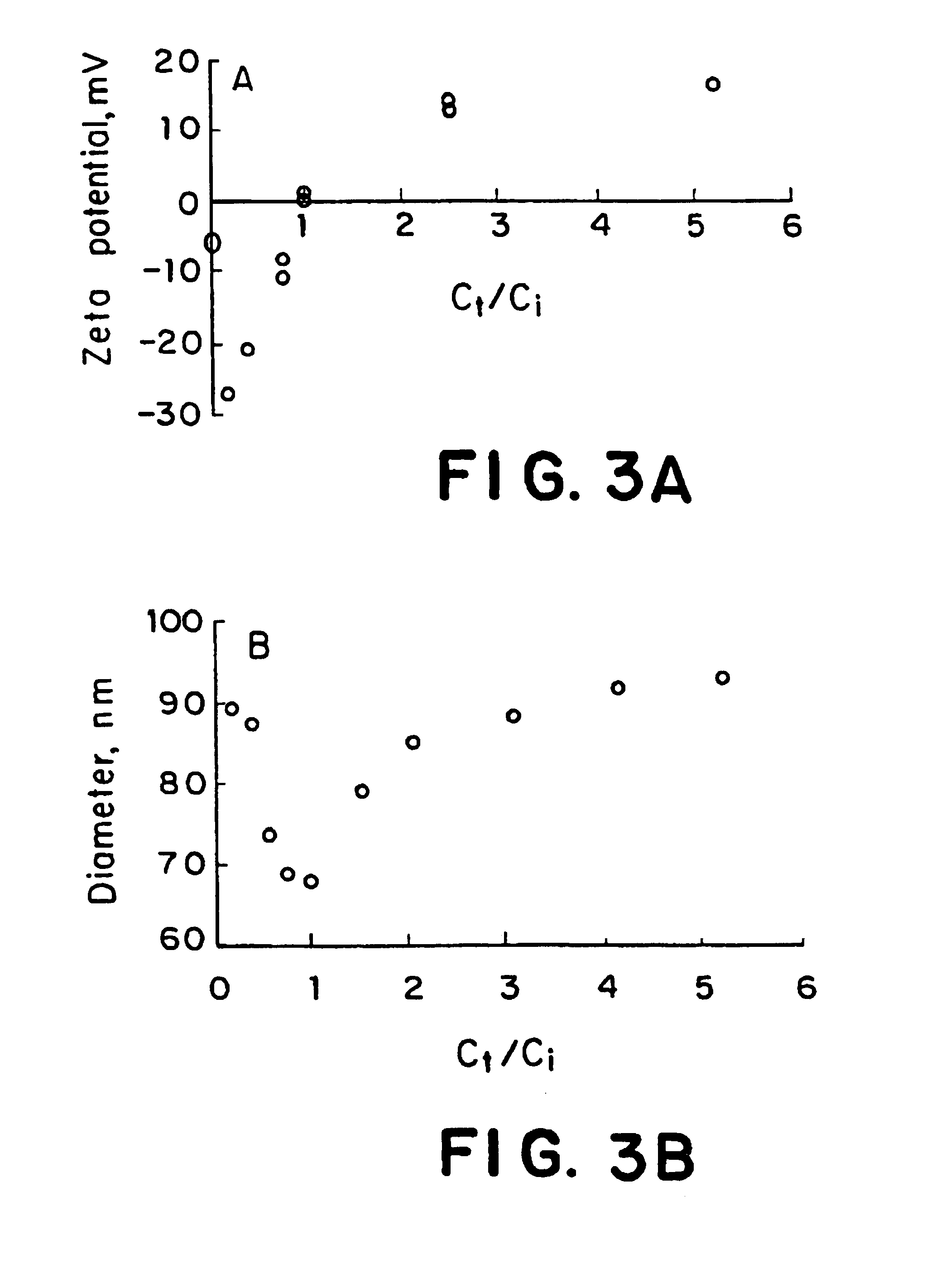Composition for delivery of biological agents and methods for the preparation thereof
a technology for biological agents and compositions, applied in the directions of pharmaceutical delivery mechanisms, emulsion delivery, powder delivery, etc., can solve problems such as inability to form, and achieve the effects of improving the therapeutic index, facilitating the administration of biological agents, and increasing the aqueous solubility of biological agents
- Summary
- Abstract
- Description
- Claims
- Application Information
AI Technical Summary
Benefits of technology
Problems solved by technology
Method used
Image
Examples
example 1
[0052]A. Block copolymer of tert-butyl methacrylate and ethylene oxide used in this study was prepared by sequential anionic polymerization generally following the previously published procedure (Wang et al., J. Polym. Sci., Part A: Polym. Chem. 1992, 30: 2251). The block lengths in copolymer were 176 for the PEO and 186 for tert-butyl methacrylate segments respectively. This copolymer was hydrolyzed to obtain the polyethylene oxide-block-polymethacrylic acid as described by Wang et al. (J. Polym. Sci., Part A: Polym. Chem. 1992, 30: 2251). The polyethylene oxide-block-poly(sodium methacrylate) was prepared by redissolving the acid form of the copolymer in tetrahydrofurane : methanol mixture (95:5 v / v) and adding NaOH in methanol. The precipitate containing polyethylene oxide-block-poly (sodium methacrylate) was filtered and washed with methanol, then redissolved in water and freeze dried. The concentration of carboxylate groups in the copolymer sample was estimated by potentiometri...
example 2
[0054]Polyethylene oxide-block-poly(sodium methacrylate) was the same as described in Example 4. The homopolymer polymethacrylic acid with a Pw=930 was obtained by radical polymerization (Lipatov, and Zubov, Vysokomol. Soedin., Ser. A. 1959, 1:88). Complexes formed between these polymers and cetylpyridinium bromide (Sigma Co.) were studied using turbidity measurements. At base molar concentrations of anionic polymers 1.08.10−3 base-mole / L; temperature 25° C., and pH 9.2. The turbidity measurements were carried out using a Shimadzu UV160 spectrophotometer at 420 nm after equilibration of the system typically for 3 minutes. The data are reported in FIG. 2 as (100-T) / 100, where T is transmission (%) for complexes from polyethylene oxide-block-poly(sodium methacrylate) and poly(sodium methacrylate).
example 3
[0055]The complexes between N-cetylpyridinium bromide and polyethylene oxide-block-poly(sodium methacrylate) were prepared in 8·10−4 base-mole / L solution of the block copolymer at 25° C. and pH 9.2. The Ct / Ci was varied from 0.01 to 5, where Ct is the total concentration of added surfactant, and Ci is the concentration of ionic groups of the block copolymer. Electrophoretic mobility (EPM) measurements were performed at 25° C. with an electric field strength of 15-18 V / cm by using “ZetaPlus” Zeta Potential Analyzer (Brookhaven Instrument Co.) with 15 mV solid state laser operated at a laser wavelength of 635 nm. The zeta-potential of the particles was calculated from the EPM values using the Smoluchowski equation. Effective hydrodynamic diameter was measured by photon correlation spectroscopy using the same instrument equipped with the Multi Angle Option. All solutions were prepared using double distilled water and were filtered repeatedly through the Millipore membrane with pore siz...
PUM
| Property | Measurement | Unit |
|---|---|---|
| particle size | aaaaa | aaaaa |
| particle size | aaaaa | aaaaa |
| size | aaaaa | aaaaa |
Abstract
Description
Claims
Application Information
 Login to View More
Login to View More - R&D
- Intellectual Property
- Life Sciences
- Materials
- Tech Scout
- Unparalleled Data Quality
- Higher Quality Content
- 60% Fewer Hallucinations
Browse by: Latest US Patents, China's latest patents, Technical Efficacy Thesaurus, Application Domain, Technology Topic, Popular Technical Reports.
© 2025 PatSnap. All rights reserved.Legal|Privacy policy|Modern Slavery Act Transparency Statement|Sitemap|About US| Contact US: help@patsnap.com



